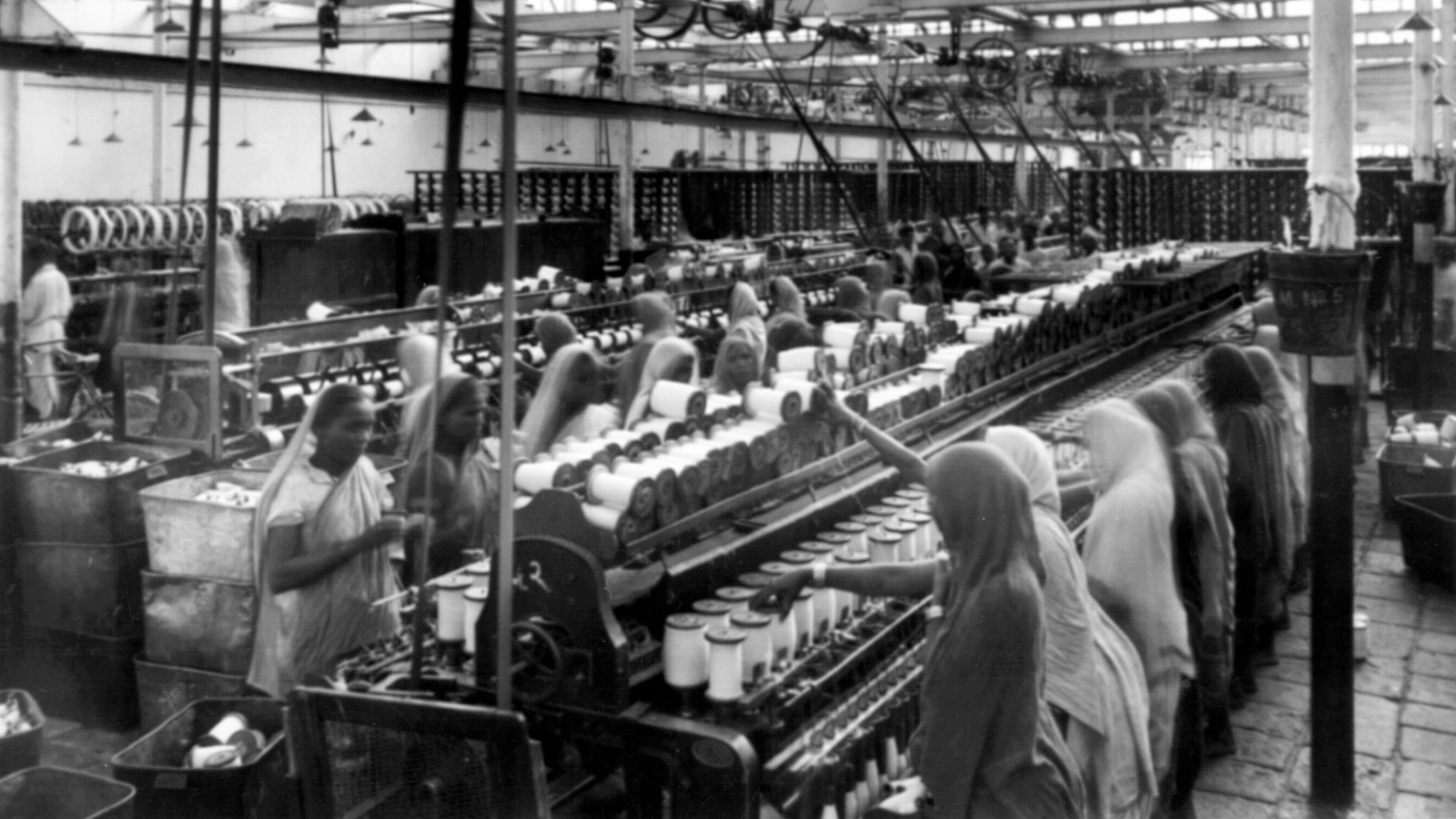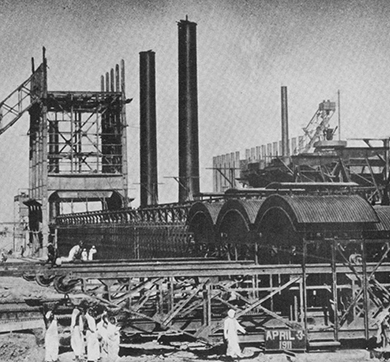1030 words | 4-minute read
To Jamsetji Tata, the textiles business, a favourite with his contemporaries at the time, was a way to increase India’s industrial prosperity. On his maiden expedition to England, and others that he made in subsequent years, he became convinced that there was tremendous scope for Indian companies to make a dent in the prevailing British dominance of the textile industry.
So it was, that in 1869, he made his first move into textiles—he acquired a dilapidated and bankrupt oil mill in Chinchpokli, in the industrial heart of Bombay, renamed the property Alexandra Mill and converted it into a cotton mill.
Two years later, Jamsetji sold the mill for a significant profit to a local cotton merchant. He followed this up with an extended visit to England, and an exhaustive study of the Lancashire cotton trade. The quality of men, machinery and produce that Jamsetji saw during this sojourn was impressive, but he was certain he could replicate the story in his own country. Jamsetji believed he could take on and beat the colonial masters at a game they had rigged to their advantage.
At the time, Bombay was the favoured location for the textiles industry, but Jamsetji's genius took him in another direction. He deduced he could maximise his chances of success if he factored three crucial points into his plans: close proximity to cotton-growing areas, easy access to a railway junction, and plentiful supplies of water and fuel.

Nagpur, near the heart of Maharashtra's cotton country, met all these conditions. It was in the heart of the cotton-growing district. Coal and water were easily available. There was a ready market for the finished product. Land was cheap — for an incredibly small sum, Jamsetji was able to buy land on a marsh. He planned to fill the land with earth that had been excavated for a reservoir nearby, and then start building. People were aghast. Reacting to his Nagpur plans, a Marwari financer likened the Empress Mills investment to "taking out earth and putting gold in the ground". The results, however, disproved all pessimists.
No doubt, the mill set off to a rocky start. In 1874, Jamsetji had floated the Central India Spinning, Weaving and Manufacturing Company, with a seed capital of Rs 1.5 lakh. To conserve the new company’s capital, Jamsetji purchased cheap machinery in England, which proved an expensive mistake. It showed in the product as well as production levels. Worse, a fire devastated the loom shed. The outlook was bleak. Share values dropped.

Staying Ahead of the Curve
It was Jamsetji’s belief in innovation that found opportunity in the disaster. When James Brooksby, the technical expert with Empress Mills, saw ring frames being used in the United States, he sent them back to the mill in Nagpur for trial. Jamsetji backed the experiment with ring spindles, even though the frames were until then, untried by Lancashire’s mills. The results were dramatic. Dividends went up to 16 percent.
Three years later, his venture was ready to realise its destiny. On January 1, 1877, the day Queen Victoria was proclaimed Empress of India, the Empress Mills came into existence in Nagpur. At the age of 37, Jamsetji had embarked on the first of his fantastic odysseys.

People First
The textile mills at Nagpur were Jamsetji’s laboratory, where he tried out his experiments in technology—and labour welfare. The excellence of his new plant was matched by his care for the workers. He installed the first humidifiers and fire-sprinklers in India. In 1886, he instituted a Pension Fund, and in 1895, began to pay accident compensation. He was decades ahead of his time and miles ahead of his competitors. The Empress Mill experiment showed that not only profits but people mattered to him.
Even as he battled for the survival of his industry, he was not too busy to think of the health of his workers. As polluted water was a cause of illness, he installed a water filtration plant and arranged for sanitary hutments. A grain depot was opened, followed by a dispensary, provident fund and pension schemes. In those early years, he also introduced a system of apprenticeship.
A Bigger Test
Emboldened by these early successes, he decided in 1886 to buy a mill that had proved to be the graveyard of many reputations. At 47, Jamsetji took on the challenge of making a ‘sick’ mill healthy. Dharamsi Mills at Kurla in Bombay had been in liquidation for four years, becoming a symbol of bad luck for prospective buyers.
That did not deter Jamsetji. He weighed the advantages of buying a ready mill, on a freehold land available for a sixth of its original price. Confident of his ability to turn it around, he bought it. He renamed it Svadeshi Mills to mark the beginnings of the Swadeshi movement, a national movement, which had massive support from Indian shareholders.

However, managing the mill proved to be a Herculean task. Jamsetji was dogged by labour shortages, beset by poor equipment, besieged by continuous complaints. Shipments were returned. Two years later, the mills failed to pay a dividend. Share prices toppled to a fourth of the original. The Tata name was at stake.
Jamsetji wouldn’t give up. Finance wasn’t easy to come by, but he put everything he had into the mill, staking his own personal resources. He revoked the trust, liberated his capital, sold some Empress Mill shares and pumped more capital into the Svadeshi Mills. He got new engines, new boilers, new sheds. Through an amazing display of personal energy, and by bringing the best of his staff from the Mills at Nagpur, Jamsetji pitchforked the Svadeshi unit into the top bracket of the textile industry.
Source: Tata Steel Diary (2004) and Jamsetji Nusserwanji Tata: A Chronicle of His Life by Frank Harris (1925)








